As the Olympic Games Conclude, a Look Back at U.S. Opening Ceremony Outfits
The photos tell the story here, as Team USA has always had an eccentric taste in its uniforms
/https://tf-cmsv2-smithsonianmag-media.s3.amazonaws.com/filer/20120810085006640px-US_Olympics_Team_1984_470-470x250.jpg)
The XXX Olympiad nears its end, and soon our athletes will be saying goodbye to the crowds and the cameras, finally exhaling, and heading back across the pond to the States. Yes, packing is on my mind again, but it must feel weird to stand there, looking around your Olympic village digs, packing up your clothes and gear, and then carefully folding your opening ceremony outfit, wondering what you are going to do with Ralph Lauren’s fitted navy blazers and cream trousers/skirts and matching head wear?
Besides embarrassment at Lauren’s scandalous mode of manufacturing (made in China!), I wonder what the athletes thought of their duds. Yes, the customary opening night uniforms were weird. But they often are. By now, it is nearly a tradition for Olympians to parade around in front of the world in questionable dress. Let’s take a look at some notable moments.
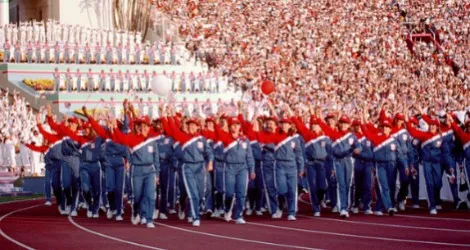
1984 was mild: on their home turf of Los Angeles, the American team dressed down in unisex tracksuits, red visors and white kicks.
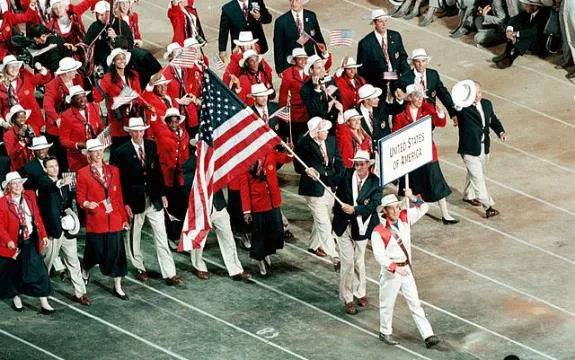
Four years later, the U.S. female athletes looked oddly girly, in prairie skirts, oversized baby blue sweatshirts with swirly designs, and little red ribbon neckties – like athletic Stepford Wives, except for the right-on-trend 80s hair.
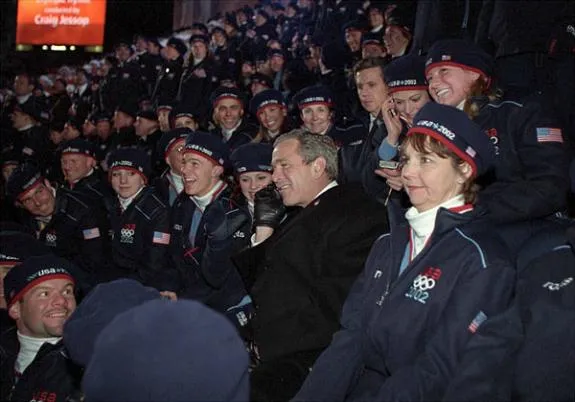
In 2000, in Sydney, being American apparently meant wearing rodeo formal. Look closely: that was only 12 years ago. For the women, it was Anne Taylor meets cowgirl with white ten-gallon hats, red boxy blazers like some kind of western Working Girl, dowdy full skirts, patriotic silk scarves and prim white stockings. The men were prep school seniors with an odd ensemble that somehow included tasseled loafers and cowboy hats.
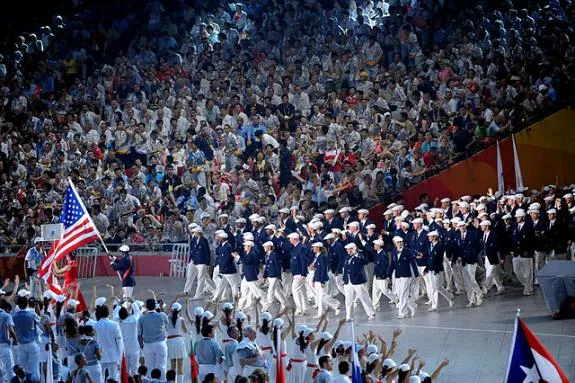
Back on home turf for the 2002 winter games in Salt Lake City, we returned to the casual look. Berets, fleeces warm-up jackets, and…white turtlenecks? Oh, and then-President Bush stopped by to hang with the Olympians.
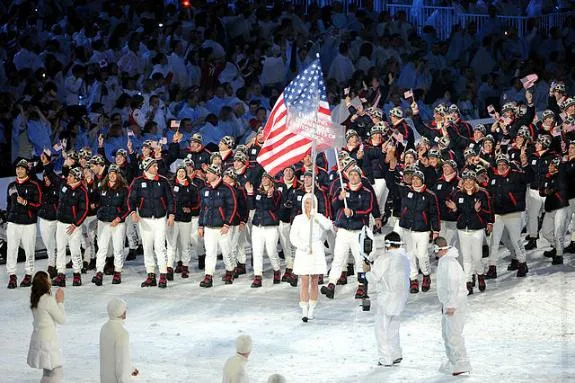
At the 2008 Beijing games, the unisex uniforms had an updated classic, tidy look: well-fitting navy blazers with the Ralph Lauren logo over one breast pocket (just a minor product placement) and the Olympic logo over the other, white trousers, straightforward red, white and blue striped ties and the most prominent accessory – white pageboy caps.
Preparing for a blustery opening ceremony at the 2010 Vancouver Winter Games, U.S. Olympians work unisex, practical outfits – black hiking boots, puffy North Face-style coats – with a couple of notable details: the white tapered pants tucked into E.G. Smith-style socks were a very deliberate choice in the skinny jean era, as were the cozy, handmade-looking knit caps (reindeer and all!).
While the opening ceremony outfits have evolved over the years, that sense of pride and excitement has not, and that’s the point of wearing matching costumes, right? For the sake of America’s pioneering spirit, I want the next designer to forget Ralph Lauren’s retro-classicism, and maybe branch out into the great beyond. I mean the Japanese already showed up in swirling, rainbow-colored capes in 2000. Where can we go from there?
/https://tf-cmsv2-smithsonianmag-media.s3.amazonaws.com/accounts/headshot/emily-spivack-240.jpg)

/https://tf-cmsv2-smithsonianmag-media.s3.amazonaws.com/accounts/headshot/emily-spivack-240.jpg)